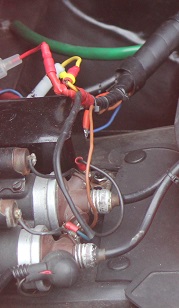
Learn theory and Applications for Electronics
A foundation for working with electrical systems from mains or battery operated devices and computers to audio visual equipment and more.
- Understand what electricity is
- Appreciate how it can be used
- Identify the different components in any electric powered device
- Apply your knowledge to observe and explain how different electric devices function
- Work safely and more effectively with electricity
Course Content
Nine lessons as follows-
- Nature and Scope of Electronics: Linear, Analogue and Digital
- Measuring Electricity
- Passive components -resistors capacitors, inductors
- Circuits
- Other Components -Diodes, Transistors, witches etc
- Input and Output devices
- Digital Electronics
- Applications - Working with Electronics
- Problem-Based Learning Project
Course Duration
100 hours of self paced learning
Learn to Understand Electricity and How it is Used
Electricity is a form of energy which is very simply explained as a flowing electric charge
Electrons are particles that have a negative electric charge, and in a stable atom, these negative charges are balanced out by other particles that have a positive charge.
When there is an excess of this negative charge, the excess charge can move to adjacent atoms within the same material, and continue moving. Some types of atoms (i.e. conductive materials) will allow this movement of a negative charge readily – materials made of these atoms are known as conductive. Other types of atoms do not readily allow the charge to flow – materials made of these atoms are known as insulative.
- Negatively charged electrons are held loosely in atoms of conductive materials, and that allows a flow of electricity readily.
- When the negatively charged particles are held more tightly, electricity does not flow as well. Such materials are called insulating materials.
The flow of electricity is called the current, is measured in Amps, and denoted by the letter “I”.
The flow of electricity can in some respects be compared to the flow of water through a pipe. The strength of the water current in such a situation depends upon:
- the difference of potential
- the nature and dimensions of the channel or pathway that the water is flowing along
Difference of potential refers to the difference between the place where the water is flowing from to the place it is flowing to. If water is flowing from a place that has a very high-water pressure to a place with a very low water pressure, we say it has a very significant difference of potential. If the difference is only slight, we say there is a very low difference of potential.
What is Voltage?
The voltage, measured in volts and denoted by the letter V, is a measure of this difference of potential, or electric pressure. If voltage is higher, electricity is forced to flow more strongly. If the voltage is lower, electricity is forced to flow less strongly.
The voltage of a circuit can be measured using a device called a voltmeter. A voltmeter has two connections, each applied to a separate part of an electrical circuit. The voltmeter reads the voltage between the two points calculating the potential difference, i.e., the voltage.
E.g. Testing the voltage across the terminals of a car battery will show a voltage of approximately 12V.
What is Resistance?
Resistance refers to a material’s ability to reduce or stop the flow of electricity within a circuit. Resistance, denoted as R, is measured in ohms, denoted by the Greek letter omega (Ω). It is important to remember this difference – R stands for resistance, Ω stands for ohms, the units we use to measure resistance. It’s like using D to represent distance, then measuring that distance in km, or kilometres.
All materials have some resistance, but those with a high resistance are essentially non-conductive, they will not allow the flow of electricity and are called insulators. Low resistance materials however are good conductors. Electrical resistance in a circuit can increase by adding longer wires, using poor quality or worn materials, components etc.
How then Do we Use Electricity?
Electric energy can be converted to other forms of energy to create things we want to happen. It can be changed into heat if we want something to be heated; or into cold, if we want something cooled. It can also be change into light, or into movement. All of these are functions we need and use routinely.
WHO IS THIS COURSE FOR?
- Retail staff in a computer store or retailers selling electric powered goods
- Students, trainees or assistants in manufacturing or repair shops seeking an improved foundation in electronics
- Entrepreneurs, small business operators, aspiring inventors, or anyone else with a passion or need to better understand the fundamentals of electronics.
- Machine operators, mechanics, construction workers, alternative energy enthusiasts